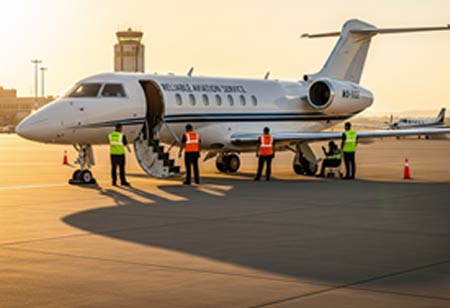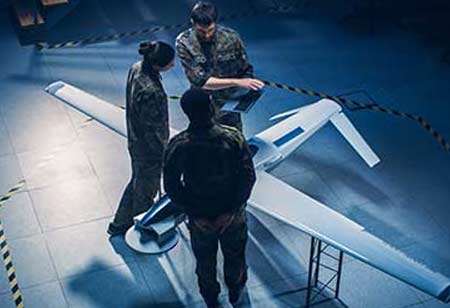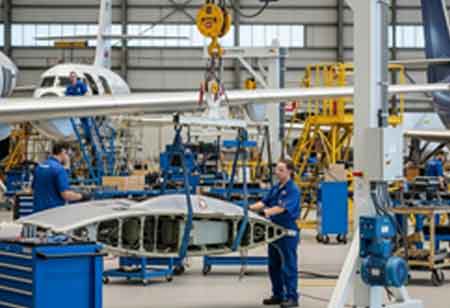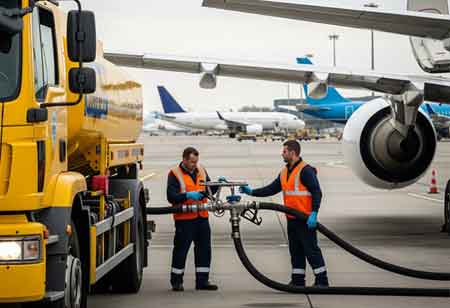The aviation industry has become the backbone of global travel, economic exchange, and supply chain connectivity. In this fast-paced ecosystem, reliability is not merely a benefit but a necessity. The demand for reliable aviation services has increased in tandem with the surge in passenger volumes, the growth of e-commerce, rising safety expectations, and the need for punctuality and operational efficiency. Airlines, airport operators, maintenance providers, and air traffic management entities are under growing pressure to ensure dependable services.
The expectations span on-time performance, aircraft readiness, route consistency, passenger experience, baggage handling, and maintenance turnarounds. Amid rising costs, climate imperatives, and digital disruption, stakeholders across the aviation value chain are adopting innovative technologies, collaborative models, and rigorous standards to improve service reliability. The market for reliable aviation services has never been more relevant, especially in the post-pandemic context, where recovery and resilience are built on trust and consistency.
Technological Advancements Transforming Reliability
Several factors are driving the need for enhanced aviation reliability, including increased global air traffic, demand for superior customer experiences, operational cost management, and stringent regulatory requirements. As air travel expands, delays, cancellations, and technical faults have broader repercussions, from passenger dissatisfaction and economic losses to reputational damage and environmental inefficiency. Aviation stakeholders are embracing next-generation technologies that enhance asset performance and inform better decision-making.
Airlines now utilize IoT sensors and real-time data analytics to monitor aircraft systems continuously. AI and ML are increasingly used to optimize fleet scheduling, crew management, and weather forecasting, reducing unexpected disruptions. Digital twin technology creates virtual replicas of engines and aircraft systems to simulate scenarios and test solutions, eliminating the need to ground physical assets. For air traffic management, technologies like satellite-based navigation, digital towers, and enhanced surveillance systems are streamlining operations and reducing airspace congestion. The innovations enhance reliability while also improving safety, efficiency, and cost-effectiveness.
Expanding Applications Across the Aviation Ecosystem
Reliable aviation service delivery is not limited to airlines. It encompasses the entire aviation ecosystem, including airport operations, air navigation services, and ground handling. The enhancements enhance operational reliability, improve customer satisfaction, and increase throughput. Sustainable aviation is another emerging trend tied to reliability. Airlines and airports are investing in sustainable aviation fuel, carbon offsetting, and electric ground support equipment to meet climate goals. As initiatives are integrated into regular operations, they must be managed seamlessly to avoid new bottlenecks or inconsistencies.
Partnerships are also reshaping the reliability landscape. Airlines increasingly work under performance-based contracts with OEMs, IT providers, and airport authorities, where compensation is linked to uptime and efficiency metrics. The shared-responsibility model improves communication, reduces redundancies, and aligns objectives across stakeholders. Regulatory bodies are revising frameworks to ensure uniformity in aviation safety and reliability standards globally, in emerging markets experiencing rapid growth. The applications of reliable aviation services are evident in the commercial and cargo sectors.
Market Needs: Bridging the Gaps in Consistency
Despite the strides in aviation reliability, the industry faces notable challenges. The most pressing issues are workforce shortages and skill gaps. With the retirement of experienced technicians, pilots, and controllers, the industry must rapidly train and upskill the next generation of aviation professionals. Infrastructure limitations hinder reliability, particularly in developing nations with outdated airport capacity, air traffic systems, and maintenance facilities. The inefficiencies contribute to frequent delays and safety concerns. Governments and private investors must expand and modernize aviation infrastructure while ensuring it meets international reliability standards.
Cybersecurity is another growing concern. With the increasing digitalization of aviation systems, from aircraft avionics to airport databases, aviation is vulnerable to cyber threats. A single breach can disrupt services, endanger passengers, and erode public trust. As a result, cybersecurity protocols, redundancies, and staff training are becoming integral to reliability planning. The aviation sector must prioritize strategic investment in infrastructure, people, and technology. Governments need to incentivize research and development, as well as skills development. Operators should embrace integrated platforms for asset and performance management.
Industry-wide collaboration must ensure that data, best practices, and innovations are shared to create a unified, robust aviation network. The need for reliable aviation services is not just operational, it’s strategic. Aviation stakeholders must align their goals and capabilities to deliver consistent, high-quality service in a world where connectivity, safety, and sustainability are interlinked. As the skies become busier and expectations rise, those prioritizing reliability will earn a competitive advantage and long-term resilience.
Reliable aviation services are essential to modern global systems, supporting commerce, mobility, and emergency response. The convergence of innovative technology, skilled workforce development, and ecosystem collaboration lays the groundwork for a more consistent and resilient future in aviation. In a market increasingly defined by trust and performance, investing in reliability is not an option; it is a mandate for sustainable growth and excellence.









